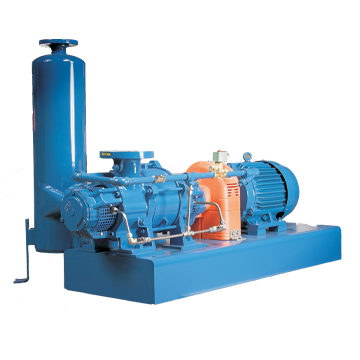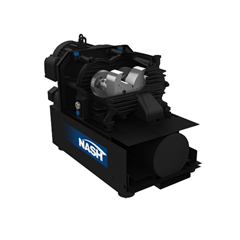Ozone Gas Sterilization
Lastly, ozone gas sterilization sterilizes by oxidation, a process that destroys organic and inorganic matter. Ozone is an unstable gas but can be easily generated from oxygen. A 6% to 12% concentration of ozone continuously flows through the chamber. The penetration of ozone may be controlled by the vacuum in the chamber or enhanced by adding humidity. As completion of exposure time, oxygen is allowed to flow through the chamber to purge the ozone. Depending on the size of the chamber load, cycle time could be up to 60 minutes.
Nash - Premier Choice For Sterilizer And Autoclave Vacuum Solutions
Nash is a leading global provider of engineered vacuum solutions and is the premier choice to support customer-specific demands of the sterilizer and autoclave industry. Our vacuum systems are rugged in construction with lower water consumption and associated utility costs. Moreover, Nash liquid ring vacuum pumps are highly-engineered and provide the following benefits:
• Handle process carryover or recycled gas, which increases operating efficiency and reduces operating costs
• Long design life for the highest reliability
• No internal lubrication required results in less maintenance and downtime
• No metal to metal contact for simple operation with wear-free performance
• Incoming vapor is condensed; therefore, smaller, less costly equipment can be selected
• Only one moving part for simple and trouble-free operation
• Proven energy-efficient design that lowers operating costs
NASH vacuum liquid ring pumps are tested per HEI standards; thus, ensuring top quality and avoiding operational downtime.
Backed by over 110 years of experience, NASH certified experts provide aftermarket support with maintenance, service, parts, and repair. Service centers are globally located to protect your vacuum system investment and provide quality, reliable and efficient solutions.
 Global (EN)
Global (EN)

